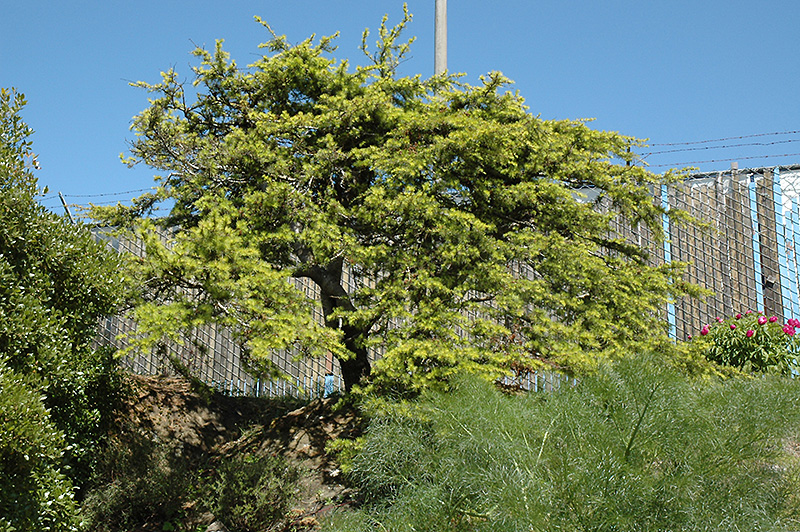Find Plants
Height: 15 feet
Spread: 15 feet
Sunlight:
![]()
Hardiness Zone: 5
Other Names: Dwarf Lebanese Cedar
Description:
A spectacular large shrub featuring beautiful dense horizontal branching with stunning bright green new foliage, like a compact garden-scale version of the species; ideal for form and texture in the shrub garden and worth seeking out
Ornamental Features
The Dwarf Cedar of Lebanon is a dwarf conifer which is primarily valued in the landscape for its broadly spreading habit of growth. It has attractive grayish green evergreen foliage. The needles are highly ornamental and remain grayish green throughout the winter.
Landscape Attributes
The Dwarf Cedar of Lebanon is a dense multi-stemmed evergreen shrub with a ground-hugging habit of growth. Its relatively fine texture sets it apart from other landscape plants with less refined foliage.
This is a relatively low maintenance shrub, and usually looks its best without pruning, although it will tolerate pruning. It has no significant negative characteristics.
The Dwarf Cedar of Lebanon is recommended for the following landscape applications;
- Accent
- Vertical Accent
- General Garden Use
Planting & Growing
The Dwarf Cedar of Lebanon will grow to be about 15 feet tall at maturity, with a spread of 15 feet. It tends to fill out right to the ground and therefore doesn't necessarily require facer plants in front, and is suitable for planting under power lines. It grows at a slow rate, and under ideal conditions can be expected to live to a ripe old age of 100 years or more; think of this as a heritage shrub for future generations!
This shrub should only be grown in full sunlight. It is very adaptable to both dry and moist growing conditions, but will not tolerate any standing water. It is not particular as to soil type or pH. It is quite intolerant of urban pollution, therefore inner city or urban streetside plantings are best avoided, and will benefit from being planted in a relatively sheltered location. This is a selected variety of a species not originally from North America.
Disclaimer - This Plant Finder tool is an online resource representing many of the varieties that we carry over the course of the season, and is intended for informational purposes only. Inventory varies seasonally, so we cannot guarantee that every plant will be in stock at all times - please contact the store directly for availability. It does not include our entire inventory of plants, so be sure to visit our store to see varieties that may not be represented on this list.

